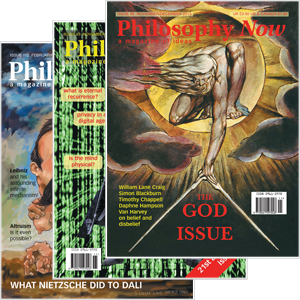
Your complimentary articles
You’ve read one of your four complimentary articles for this month.
You can read four articles free per month. To have complete access to the thousands of philosophy articles on this site, please
Appearance and Reality
Simworld
Sam Woolfe gives us a brief history of the idea that reality is unreal.
Anyone who has seen The Matrix (1999) will know that the basic premise of the film is that our ‘reality’ is simulated in our minds by a computer intelligence. However, the idea that reality is a simulation is not new. The essence of the idea can actually be traced back at least to around 300 BC in China, where, in a reverie, the influential Daoist philosopher Zhuangzi famously asked, “Am I a man dreaming I am a butterfly, or a butterfly dreaming I am a man?”
Zhuangzi was struggling with the question of whether reality as he experienced it was merely the product of a dream. (Whether or not reality is a dream, dreams are in any case only a simulation of reality, since a dream is a product of the mind alone, cut off from the outside world.) In the seventeenth century, the French philosopher and mathematician René Descartes would ask a similar question, not only through similarly doubting that we can know whether we are awake rather than dreaming, but also in his infamous ‘Evil Demon’ hypothesis. This hypothesis states that everything we experience, perceive or believe, could be a hallucination fed to us by a powerful, malignant demon, whose only aim is to deceive us.
Modern philosophers have repackaged this ‘Simulation Hypothesis’ – the idea that we might live in a simulation – beyond these supernatural forms. For example, Hilary Putnam (1926-) has argued that it is possible that each individual is merely a brain in a vat of nutrients being fed sense-data through electrodes attached to a computer. (This idea provided the basic premise of The Matrix.) In this case, every time we experience the pleasure of food, or sex, the sensation of heat, the smell of a flower, or the sight of a loved one’s face, the only external source for these experiences is the information stored in the computer, from which data is being fed directly into our brains. Of course, just because this scenario is conceivable does not mean that it’s plausible. To believe it is even possible requires a number of assumptions, for example, that computers could simulate reality in this way, and that the designers of such computers would want to simulate reality in this way.
Some thinkers have taken the reasoning employed by Putnam and the creators of The Matrix to a new extreme. They have suggested that in reality there are not even brains. Rather, the physical universe itself, and therefore everything we know, including anything about brains, is a simulation generated in a computer by some hyper-advanced civilisation. The Oxford philosopher Nick Bostrom has argued that because of the vastness of the Universe, there must be civilisations so technologically advanced that they have the computing power to simulate whole universes. Perhaps these civilisations have harnessed the power of quantum computing. However they manage to simulate universes, Bostrom claims that if a civilisation can do it, then they will, because advanced technology arises from high levels of curiosity. He reasons that even if such civilisations are rare, they will certainly create many simulations of universes, and simulations within simulations, so that in the end the simulated universes will inevitably far outnumber real universes. This therefore makes it likely that we are in a simulated universe ourselves, apparently.
Bostrom’s reasoning about motivation would certainly apply to the human race, as we seem to need to satisfy our curiosity at any cost. We have burrowed into reality to the depths of the atom, even though this resulted in the invention of the atomic bomb. So even if simulating a universe were to lead to extensive suffering, the argument is that the moral problem would be outweighed by the curiosity of the scientists of this advanced civilisation. A crucial assumption being made here, however, is that such a civilisation would think in the same sort of way we do. Perhaps a highly-evolved civilisation would be moral enough not to simulate universes in which beings like ourselves suffer. But that’s just me being optimistic.
Claims that the Universe could be a computer-generated simulation have received criticisms from a number of physicists. John Barrow, for example, says in The Infinite Book (2005) that if our Universe were a simulation there would be clues for this in the form of glitches, errors or gaps in the programming – that is, in the apparent behaviour of the physical universe. This is because even a super-civilisation may not know everything there is to know about the implications of the laws of physics that they’ve programmed into their artificial reality, and they will, in any case, not have infinite processing power. So far, it seems, we have not come across any of these glitches. The popular science writer John Gribbin has also argued in In Search of the Multiverse (2010) that our Universe is more likely to have originated from a black hole than from a computer simulation. He points out that it would be much easier for a super-civilisation to create our Universe by creating a black hole (which our own civilisation may soon be able to do) than by simulating the energy, position and velocity of every particle in the entire Universe. The computing power necessary for that feat is beyond, well, computing. Therefore, although it is possible that a supercivilisation could have created our Universe, in all likelihood they would have used black holes, not supercomputers, to do so.
© Sam Woolfe 2013
Sam Woolfe is a recent philosophy graduate from Durham University. His main interests are applied ethics, modern science, futurism and existentialism. He currently lives in London.









